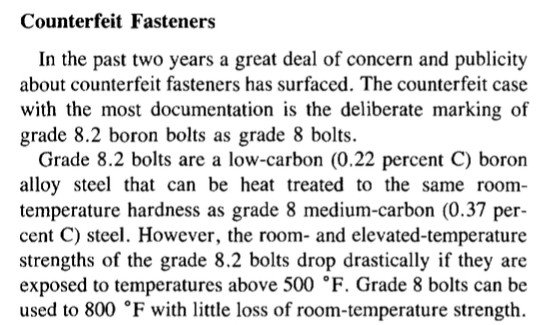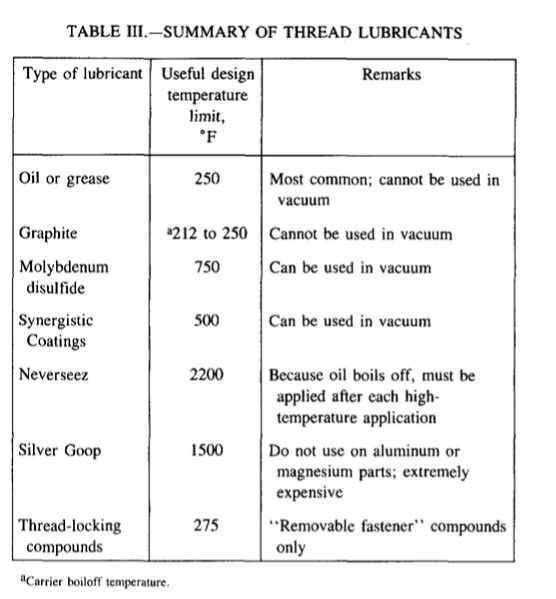NASA Reference Publication 1228, from March 1990: Fastener Design Manual. By Richard T. Barrett, Senior Aerospace Engineer of NASA Lewis Research Center.
NASA Fastener Design Manual
This is a not-too-technical useful guide, loaded with plenty of debunking of fastener myths, and complete with numerous helpful charts and tables about fastener styles, torquing, identification, plating, lubrication, etc. Covers nearly all types of fasteners and fastener-related products, including many common commercially available parts and materials. Comes with three useful appendices: Bolthead Marking and Design Data, Bolt Ultimate Shear and Tensile Strengths, and Blind Rivet Requirements.
Looks like Barrett is/was (probably retired now) "The Fastener Guy" at NASA. In addition to the manual above, he has a lengthy 9-part fastener design course on YouTube (part 1 below):
Barrett also published his Fastener Design Course in PDF. Barrett's fastener educational efforts were so comprehensive that he was awarded the Federal Laboratory Consortium Award of Excellence in Technology Transfer for 1993.
Some screenshots from the PDF link above:
And here's the PDF again:
NASA Fastener Design Manual
Previously:
astronaut loses $100,000 tool bag during spacewalk
International Space Station tools
English/metric measurement error in the Mars Climate Orbiter


 LinkBack URL
LinkBack URL About LinkBacks
About LinkBacks







 Reply With Quote
Reply With Quote



Bookmarks